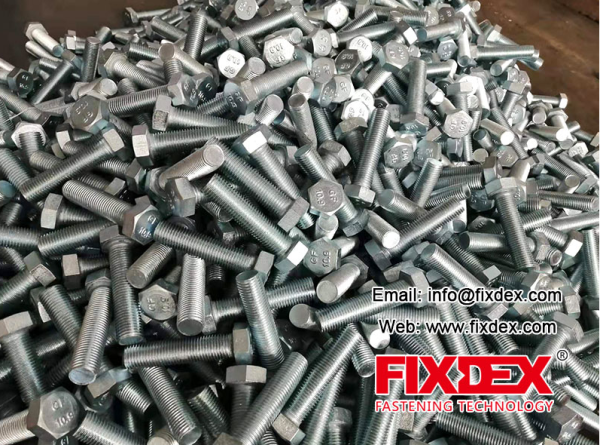Is the bolt axial force and preload a concept?
Bolt axial force and pretightening force are not exactly the same concept, but they are related to a certain extent.
Bolt axial force refers to the tension or pressure generated in the bolt, which is generated due to the torque and pre-tightening force acting on the bolt. When the bolt is tightened, the torque and pre-tightening force act on the bolt to generate axial tension or compression force, which is the bolt axial force.
Preload is the initial tension or compression applied before a bolt is tightened. When a bolt is tightened, the preload creates axial tensile or compressive forces on the bolt and presses the connected parts together. The size of the preload is usually determined by the amount of torque or stretch.

Therefore, the pretightening force is one of the reasons for the axial tensile or compressive force of the bolt, and it is also one of the important factors controlling the axial tensile or compressive force of the bolt.
What is the relationship between the preload of a bolt and its yield strength?
The pre-tightening force plays a very important role in the fastening and connection of the bolts, and its magnitude should be sufficient to cause the bolts to generate axial tension, thereby ensuring the tightness and safety of the connecting parts.
The yield strength of the bolt refers to the strength of the bolt to achieve plastic deformation or failure when it is subjected to axial tension. If the preload exceeds the yield strength of the bolt, the bolt may permanently deform or fail, causing the joint to loosen or fail.
Therefore, the pretightening force of the bolt should be controlled within an appropriate range, neither too large nor too small, and it needs to be determined according to factors such as the yield strength of the bolt, material properties, stress state of the connector, and working environment. Usually, the bolt pretightening force should be controlled within the range of 70%~80% of the bolt yield strength to ensure the safety and reliability of the connection.
What is the yield strength of a bolt?
The yield strength of a bolt refers to the minimum strength of the bolt that undergoes plastic deformation when it is subjected to axial tension, and is usually expressed in terms of force per unit area (N/mm² or MPa). When the bolt is pulled beyond its yield strength, the bolt will be permanently deformed, that is, it will not be able to return to its original shape, and the connection may also loosen or fail.
The yield strength of bolts is determined by factors such as material characteristics and process conditions. When designing and selecting bolts, it is necessary to select bolts with sufficient yield strength according to the requirements of the connecting parts and the working environment and other factors. At the same time, when tightening the bolts, it is also necessary to determine the size of the pre-tightening force according to the yield strength of the bolts, so as to ensure that the bolts can bear the working load without excessive plastic deformation or damage.
Original Source: https://www.fixdex.com/news/basic-knowledge-of-anchors-and-bolts/
Media Contact
Company Name: Hebei Goodfix Industrial Co.,Ltd.
Email: Send Email
Country: China
Website: https://www.fixdex.com/
